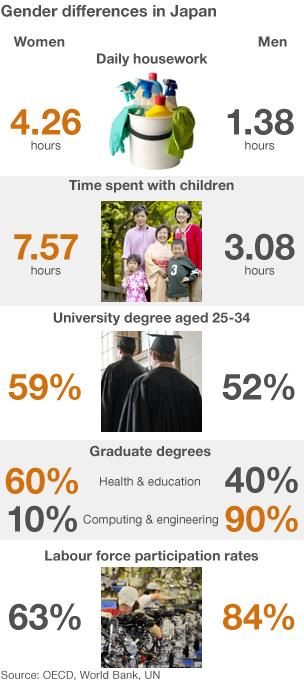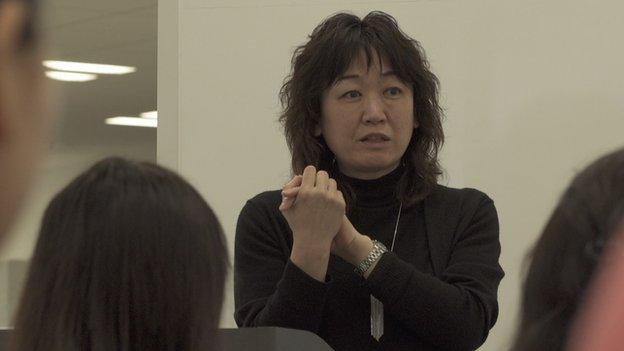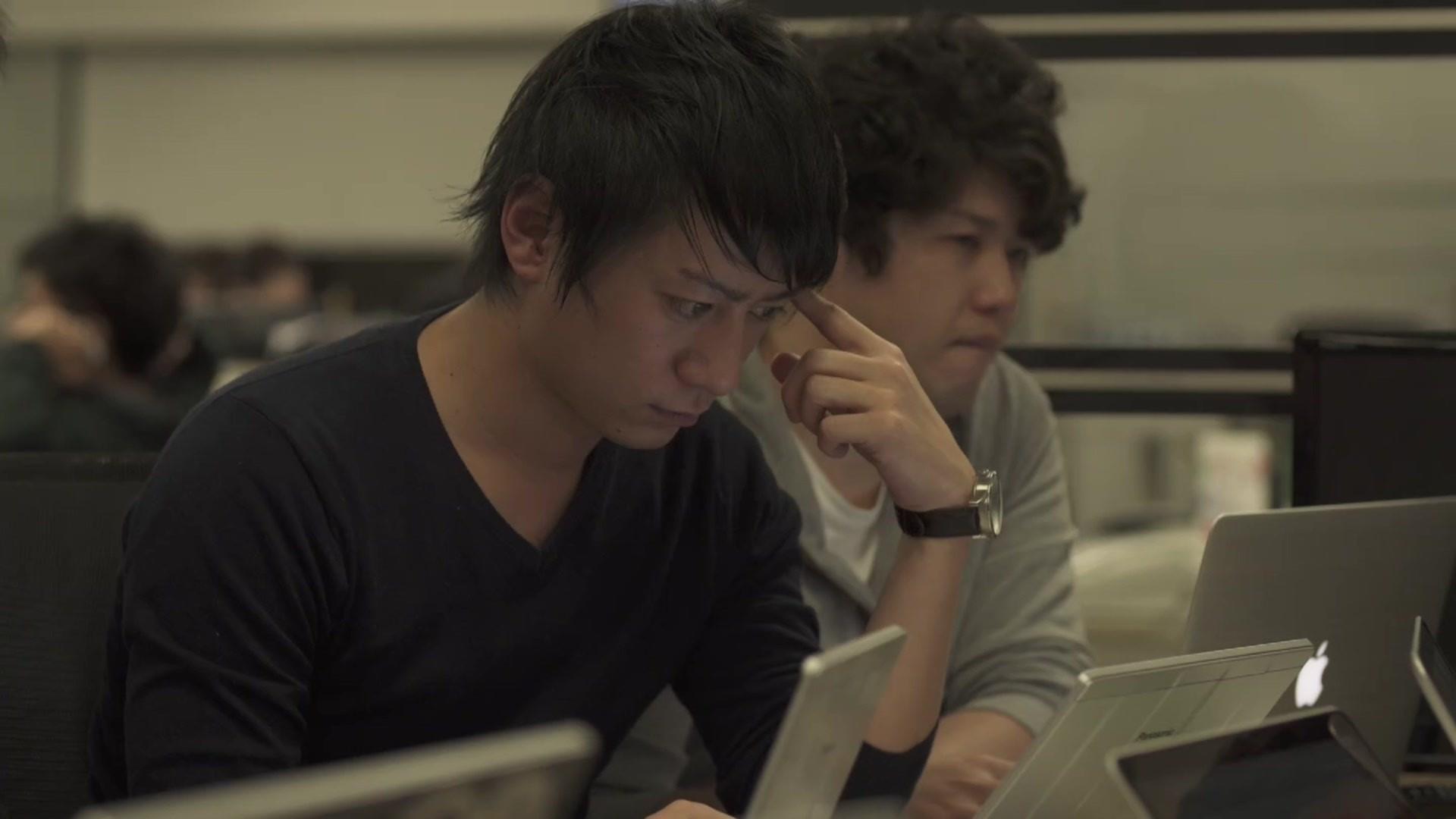Is Japan's plan for more women in the workplace failing?
- Published

Until early the 1990s, Japanese girls received homemaking education while boys didn't
On paper, Prime Minister Shinzo Abe's plan to get more women into Japan's shrinking workforce - also referred to as "womenomics" - looked great.
The goal was to fill 30% of senior positions in both the public and private sectors with women by 2020.
However, within two years this target has been cut to just 7% for senior government jobs and 15% at companies.
There are many reasons behind this revision.
Watch more about the drive for gender equality in corporate Japan
Last year, I questioned if my fellow countrywomen were willing to lead, because I also wanted to become a housewife when I was growing up in Japan.
Until early the 1990s, girls received homemaking education while boys didn't. We grew up thinking it was our role to stay at home and raise children, not to become a boss or leader.
But among those who want to or need to work, the shortage of childcare centres has long been a major issue.
"Die Japan"
The government has repeatedly said it is working on building more facilities.
But the topic was brought back into the spotlight when an anonymous mother posted a strongly-worded blog, external, saying: "My child wasn't accepted for nursery school. Die, Japan!!!"
The post was even mentioned in a parliamentary debate where Mr Abe doubted its authenticity, prompting anger and resulting in protests outside of the Parliament building.
The government has since revealed that 72,000 children are still on waiting lists to be accepted into childcare.
It also raised questions about what is causing the shortage. One of the main reasons is the low wage of nursery teachers.

Mariko Yanagisawa, 53, has been a teacher for 24 years. But her monthly take home salary is 160,000 yen ($1,415; £1,001) which is less than a third of what Japanese men in their 50s earn on average.
"I am very passionate about this job so I try to manage but I am worried that young people won't choose this profession because of it," she said.
"Many teachers have left because they find it too hard to survive on our salary especially when our job is physically demanding to look after young children."
According to the survey, external by the Tokyo government in 2013, 20% were considering leaving the job for the exact same reasons.
Ingrained sexism
Currently about two thirds of Japanese women are working but mostly part-time or on irregular contracts.
Kathy Matsui of Goldman Sachs who first wrote about womenomics, external in 1999 believes closing Japan's gender employment gap would add an estimated 7.1 million employees to the workforce and lift gross domestic product by as much as 13%.
But in addition to the lack of childcare, there is still a culture of ingrained sexism. To remove it requires strong leadership.

Akira Matsumoto, Chairman at Calbee has hired more female managers since he joined in 2009
Snack food maker Calbee is one of very few companies which is likely to hit the government's original target of increasing the proportion of female managers to 30% by 2020. It is thanks to the company's chairman Akira Matsumoto.
When he took the top job at the firm in June 2009, only 5.9% of managers were women. Within five years, it has more than tripled to nearly 20%.
"The key is the top management's commitment. Some executives in Japanese companies are still reluctant because they feel comfortable being in a man's world," he said.
Tomoko Fukuyama is Calbee's highest ranked female executive with 800 staff reporting to her.
When Mr Matsumoto appointed her, he told her that it was an order for her to leave work by 4pm so that she can go home to her daughters.

Tomoko Fukuyama has 800 staff at Calbee reporting to her
"I cannot be like the executive before me but the chairman said that's ok, so I decided to give it a go," said Ms Fukuyama.
Mr Matsumoto wants to see major Japanese companies such as Toyota and Nissan push diversity further because he thinks the rest of corporate Japan is more likely to follow.
"Calbee is too small," he said with a humble smile.
But at Toyota only 3% of managers are women while at Nissan it is slightly higher at 8%. Only about 3.5% of senior government jobs are held by women.
What Calbee has managed to achieve is proving a near impossible task for the rest of the country.
- Published22 March 2016

- Published21 March 2016

- Published21 March 2016

- Published31 March 2015
